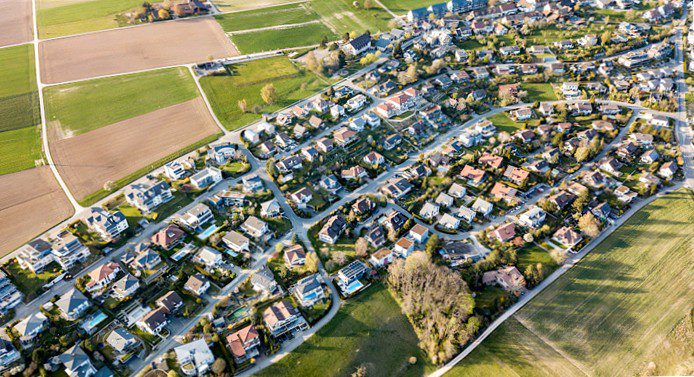
In the Swiss mortgage market, the trend towards long terms is increasing, as the current Comparis Mortgage Barometer shows. Many property owners protect themselves from distortions in the capital markets by switching to fixed-rate mortgages.
The indicative rates of long-term fixed-rate mortgages have risen significantly since the beginning of the year. This is shown by data from HypoPlus, the mortgage specialist of the Comparis Group. "Inflation and the possible impact of the war in Ukraine on central bank decisions in the U.S. and the EU are currently worrying many property owners. They protect themselves from distortions on the capital markets by switching to fixed mortgages," observes Comparis financial expert Leo Hug. Remarkable is the demand for 15-year mortgages, which has hardly been seen in recent years. In his opinion, the newly emerging mortgage offers without the clause of a prepayment penalty have probably also contributed to the increased demand.
Central banks in a dilemma
Persistently rising commodity prices lead to higher inflation expectations. According to Comparis, this causes an upward pressure on mortgage rates in the mortgage market, especially in the long maturities. The U.S. Federal Reserve (Fed) and the European Central Bank (ECB) will have to fight inflation by raising interest rates, explains Hug. However, due to the Ukraine war, economic growth is also expected to cool down. Raising interest rates too quickly could stall economic growth. In his view, central banks are in a new phase of their permanent balancing act.
Maturity periods in comparison
Higher interest rate differential to the swap market
Due to the narrow scope of the central banks, Saron mortgages are unlikely to increase in price by leaps and bounds for the time being. Nevertheless, according to Comparis, they are losing popularity in the current political and economic environment. According to data from HypoPlus, mortgage borrowers are increasingly preferring the budget security of long-term mortgages instead of being exposed to the increased volatility of the interest rate markets.
This marks the end of a multi-year phase of rock-bottom rates for fixed-rate mortgages: in mid-May 2019, the banks' ten-year refinancing rates – known as swap rates – slipped into negative territory on a sustained basis, falling to their lowest level of minus 0.69% by mid-August 2019. Since then, they have been trending upward and reached 21. March 2022 the level of 1.71%.
Mortgage market has become more competitive
During the interest rate crunch, the mortgage market has become more competitive. The margin between banks' 10-year refinancing rates and mortgage rates was still 1.19 percentage points in mid-May 2019. Today, after the return to higher yields, the bank margin for ten-year mortgages has shrunk to 0.97 percentage points.
"Competition between mortgage institutions has become fiercer in the past three years. One factor contributing to this has been increased transparency thanks to comparison platforms. On the other hand, the increased management of the mortgage market by investment foundations, pension funds and insurance companies has increased the pressure on mortgage banks," says Hug. The remaining difference of 0.44 percentage points between the benchmark rate and the top interest rate of HypoPlus also shows that mortgage borrowers still have room for negotiation.